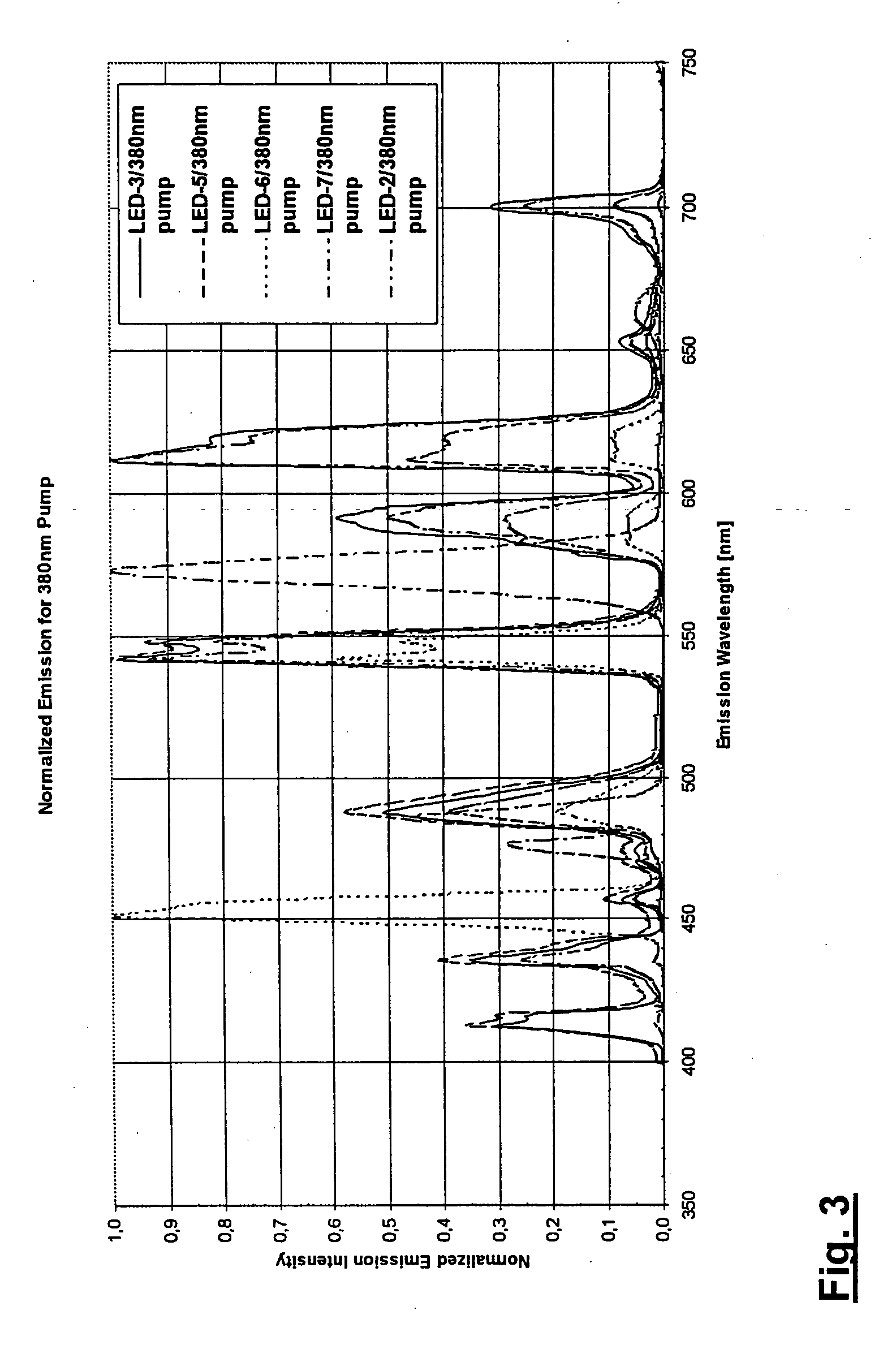Rare earth doped luminescent glass
a luminescent glass and rare earth technology, applied in the direction of energy-saving lighting, other chemical processes, sustainable buildings, etc., can solve the problems of limited spectral range, limited temperature stability, poor color rendering properties, etc., and achieve the effect of reducing the maximum phonon energy and low oh
- Summary
- Abstract
- Description
- Claims
- Application Information
AI Technical Summary
Benefits of technology
Problems solved by technology
Method used
Image
Examples
Embodiment Construction
[0047] Apart from the wide variety of glasses discussed before, particularly phosphate phosphor glasses are disclosed by the current invention for making highly efficient luminescent glasses that are highly doped with rear earth oxides. These glasses will be described in the following.
[0048] Phosphor glasses of the present invention comprise P2O5, Al2O3, alkali earth oxides, and alkaline earth oxides. Preferably, the glass contains a maximum of 4 weight percent, especially a maximum of 2 weight percent, of conventional additives or impurities, such as refining agents (e.g., As2O3, Sb2O3), antisolarants (e.g., TiO2, Sb2O3, Nb2O5) and SiO2 and ZrO2 which can enter the glass through dissolution of the melting vessel. The inventive glasses are doped with trivalent lanthanide oxides (oxides of elements 57-71) or trivalent rare earth oxides (lanthanide oxides and oxides of Sc and Y) in an amount exceeding 2 mol %, preferably exceeding 3 mol % and particularly preferably exceeding 4 mol %...
PUM
| Property | Measurement | Unit |
|---|---|---|
| color temperature | aaaaa | aaaaa |
| color temperature | aaaaa | aaaaa |
| color rendering index | aaaaa | aaaaa |
Abstract
Description
Claims
Application Information
 Login to View More
Login to View More - R&D
- Intellectual Property
- Life Sciences
- Materials
- Tech Scout
- Unparalleled Data Quality
- Higher Quality Content
- 60% Fewer Hallucinations
Browse by: Latest US Patents, China's latest patents, Technical Efficacy Thesaurus, Application Domain, Technology Topic, Popular Technical Reports.
© 2025 PatSnap. All rights reserved.Legal|Privacy policy|Modern Slavery Act Transparency Statement|Sitemap|About US| Contact US: help@patsnap.com



